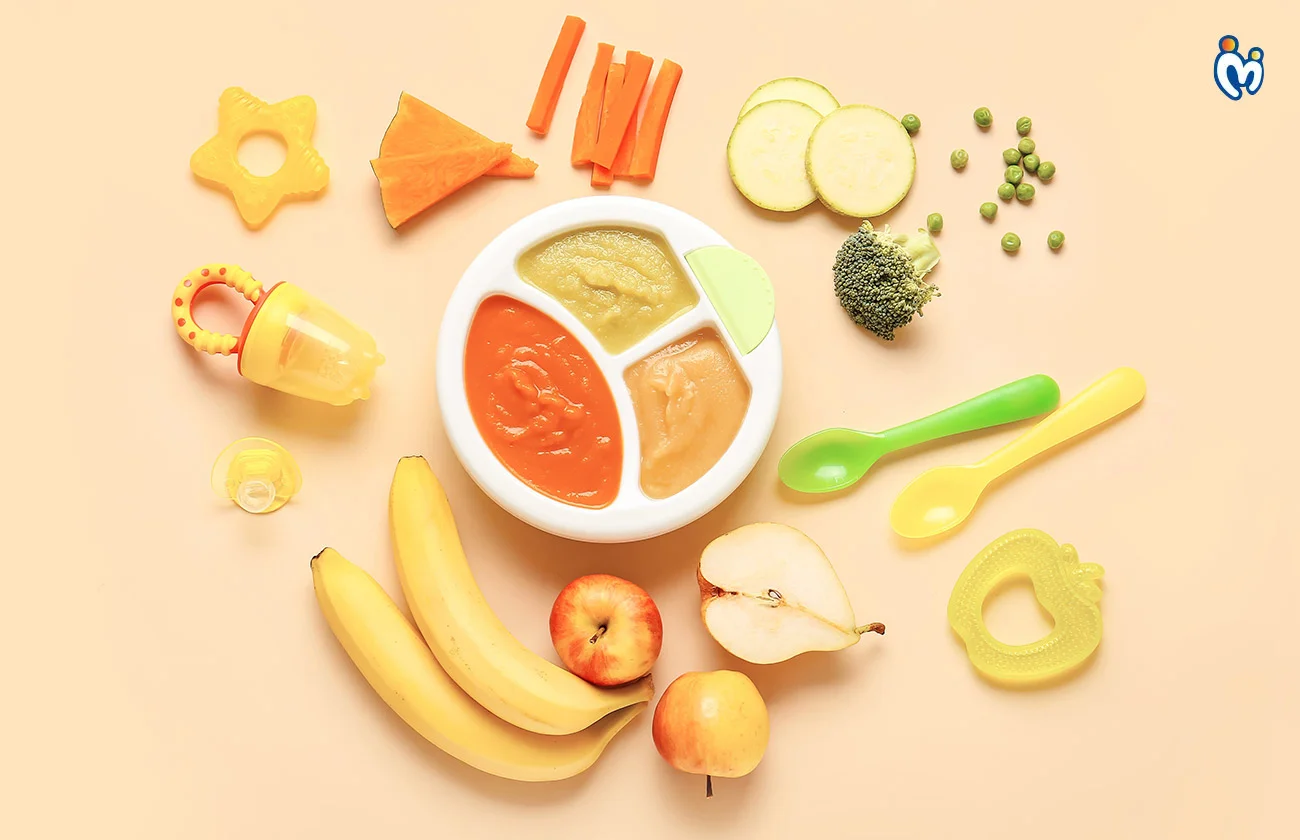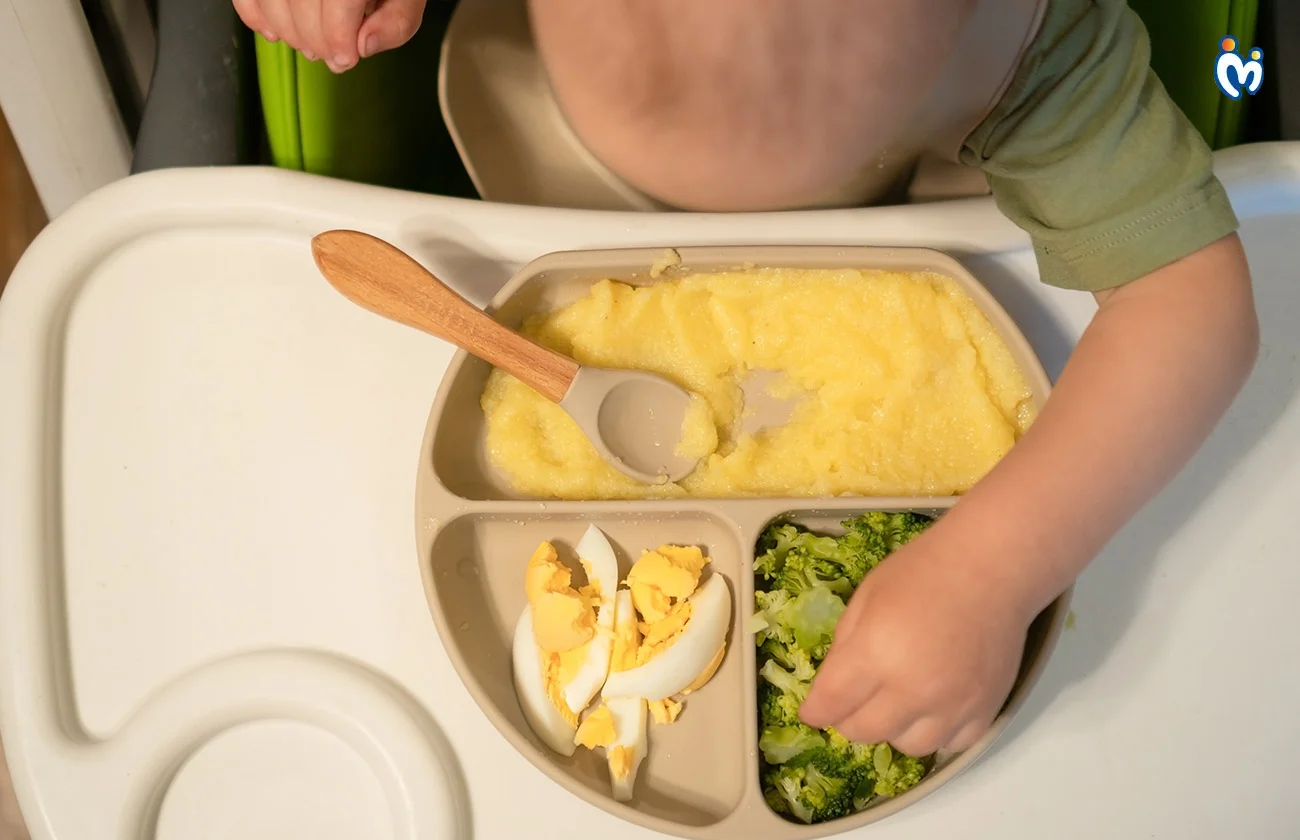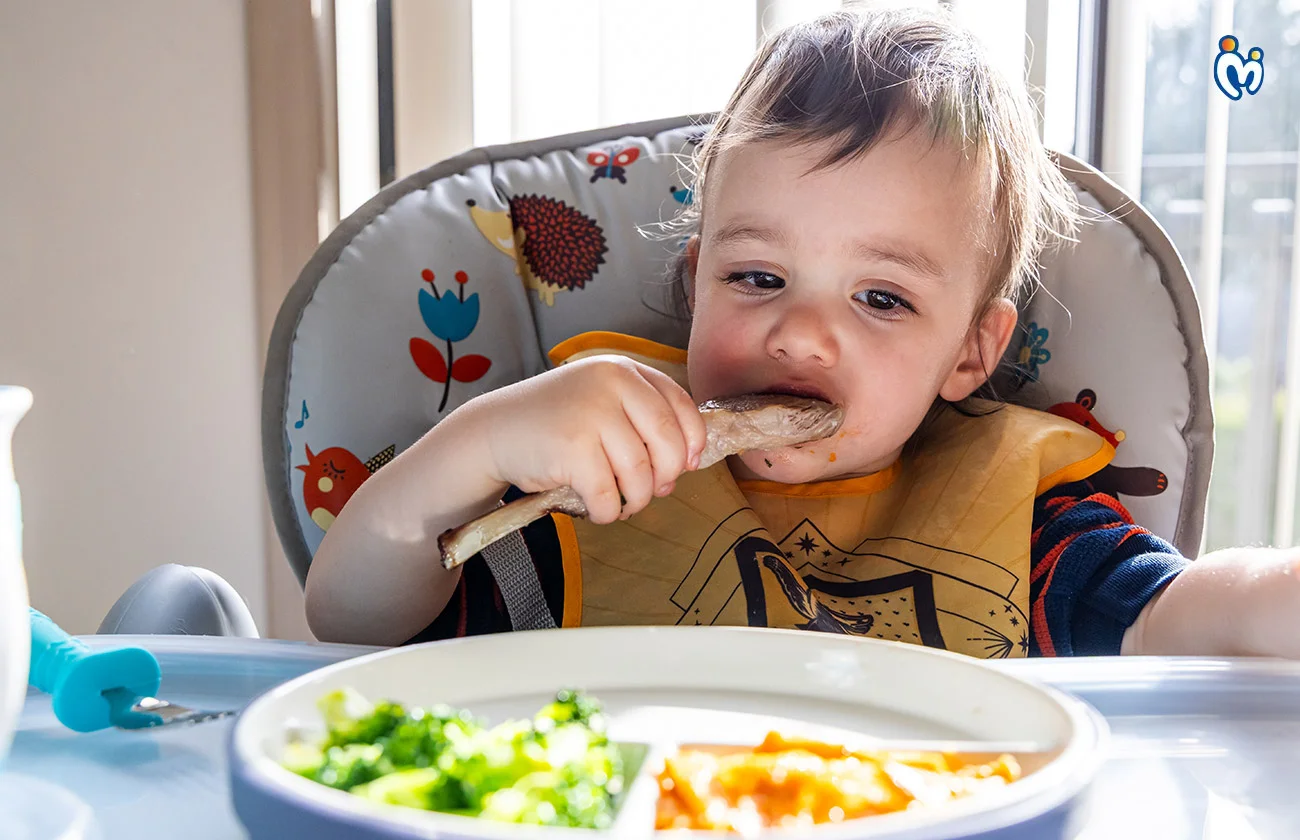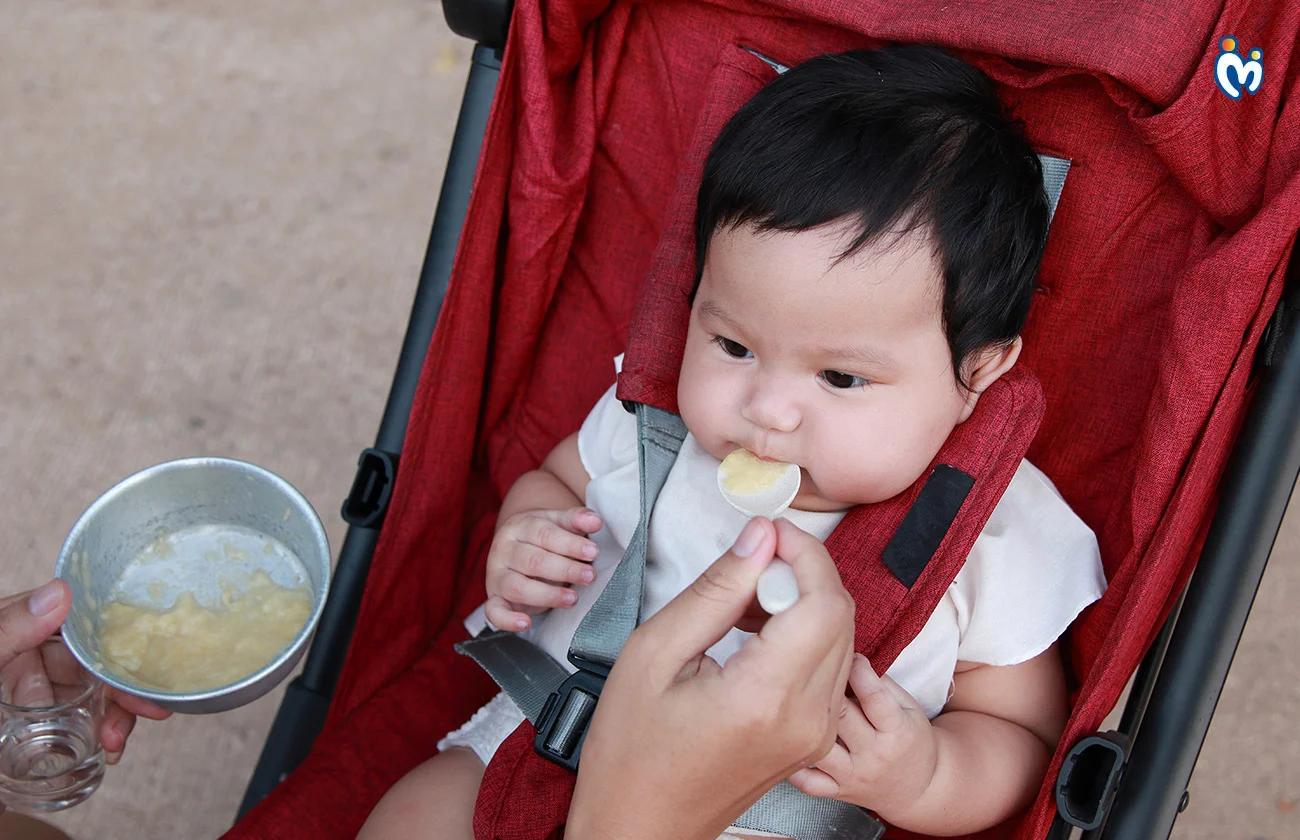Messy, mushy, and totally worth it: starting solids the Indian way.
Hello, Mamy! Welcome to the Land of Mashed Bananas and Flying Spoons
Your baby is growing, and so is their curiosity. About spoons. About your plate. About that mysterious thing called "eating."
If your little one is starting to reach for your roti or giving your bowl of dal the side-eye, it might be time to begin the weaning journey.
It’s going to be messy. Yes, it’ll be a little chaotic. But it’s also a milestone for you and your baby! This journey is going to be full of giggles, food-flinging and... some adorable “first bites” photos.
Let’s break it down, Indian-mamy style.
When Is Baby Ready for Solids?
The golden rule: around 6 months. But readiness matters more than age.
Look for these signs:
- Baby can sit upright with support
- They show interest in food (a.k.a. trying to steal your chapati)
- The tongue-thrust reflex has reduced
- They’re still hungry even after full milk feeds
Always check with your pediatrician before starting solids, especially if your baby was premature or has allergies.
First Foods: Ensure That They’re Local, Lovable & Gentle
Indian kitchens are full of nourishing, baby-friendly ingredients, and no, you don’t need anything “fancy” to start weaning.
Here are some first-food MVPs that can be on your side while you wean your little one:
- Mashed banana (kela): Soft, naturally sweet, and easy to digest
- Rice water (chawal ka paani): A simple, gentle start for sensitive tummies
- Steamed potato or carrot mash: A classic weaning food for good reasons!
- Apple or pear puree: Cooked and mashed smooth
- Ragi porridge: Rich in iron and baby-approved in taste
Mamy tip: One new food at a time. Wait 3 days before trying another to watch for reactions.

Textures, Not Just Taste
At first, your baby may just lick the spoon or smoosh the food into their eyebrows. That’s okay!
Here’s how texture exploration usually unfolds:
- 6–7 months: Silky purees and smooth mashed foods
- 7–9 months: Slightly thicker mashed foods with soft lumps
- 9+ months: Soft finger foods (like steamed veggies or small idli bits)
Don’t stress if your baby doesn’t “eat” much. At this stage, they’re exploring, not filling up. You can continue feeding them breast milk as they explore the texture of different foods, and get used to different tastes and foods that are a little more complex than breast milk!
Mild Indian Spices That Are Baby-Safe
Contrary to popular belief, babies can enjoy flavor. You just have to introduce it gently to their sensitive palate without overwhelming them.
Safe spices to try (after 7–8 months):
- A pinch of hing (asafoetida)
- A dash of jeera (cumin)
- A sliver of ajwain (carom seeds)
- A whisper of haldi (turmeric)
Skip the chilli, salt, and heavy spice blends until your baby is a little older. Their tastebuds are still quite brand new, so gentle is the way to go.

Milk Still Matters
Even after starting solids, breastmilk or formula remains your baby’s primary source of nutrition until they turn one.
Solids are a supplement, but they aren’t a substitute for the basic nutrition that they’re already deriving from breast milk at this stage. Think of it as: Milk for growth. Solids for practice.
Let the Mess Happen (Really!)
Food will land on the floor. And the high chair. And your hair. It’s fine.
Babies who are allowed to explore food without pressure often grow into more confident, curious eaters. While you ease them into a gentle transition to solids, what you CAN do, is baby-proof some areas and mentally prepare for some cleaning up to happen. What else you could do, is:
- Put a mat under the high chair
- Dress your baby in a wipeable bib (or no shirt at all!)
- Expect food to be more of a toy at first
- Laugh. Take pictures. Breathe.
Feeding is a way for you to bond with your baby. Don’t worry about being perfect. Release the pressure of doing it “right”, and just… enjoy the process, Mamy!

What if Baby Refuses Food?
That’s totally normal. Babies may take time to adjust to the idea of eating. Here’s what you can do:
- Try again tomorrow
- Change the time of day
- Let them touch and play with the food
- Eat in front of them. They love mimicking you!
- Keep offering, without forcing
A little tip for Mamy: We know that the idea of pulling yourself down can be tempting at times. And sometimes, we tend to turn to self-blame when we don’t have the situation under control. We tend to assume that we’re “failing” if our baby doesn’t respond to our attempts at feeding in predictable ways. However, whenever you feel that way, it is a signal from your body to pause in the moment and take stock of reality. You’re just parenting, and you’re trying your best to figure it out! You’ve got this!

Dear Mamy, Every Bite Is a Win-Win!
Some days, your baby will devour a bowl of dal mash. Other days, they’ll throw it at the wall and cry. That’s just a regular day in life when you’re on the baby-weaning journey.
Through every spoonful, satisfied little giggle, and food stain on the floors or the walls, you’re building trust, independence, and love around food for your baby. And that’s the real magic of being a mother!
So breathe easy, embrace the mess, and celebrate this new adventure. You’ve fed your baby with your body and heart all this time, and now, you get to feed them with a little spoon too!
FAQ's
Q. When should I start solids for my baby?
Ans.Most babies are ready for solids around six months, but readiness signs matter more than age. Look for sitting with support, interest in food, and reduced tongue-thrust reflex. Always consult your pediatrician, especially if your baby was premature or has health concerns, before beginning their weaning journey.
Q. What are the best first foods for Indian babies?
Ans.Great first foods include mashed banana, rice water (chawal ka paani), steamed potato or carrot mash, ragi porridge, and cooked apple or pear puree. These are gentle, nutritious, and easy to digest. Introduce one new food at a time and wait three days to watch for allergic reactions.
Q. Can I add spices to my baby’s food?
Ans.Yes, mild spices like a pinch of hing (asafoetida), a dash of jeera (cumin), ajwain (carom seeds), or a little haldi (turmeric) can be introduced after 7–8 months. Avoid chili, salt, or heavy spice mixes. Start slow to ensure your baby’s sensitive taste buds adjust comfortably to flavors.
Q. How do I know if my baby is ready for textured foods?
Ans.At 6–7 months, begin with smooth purees. Between 7–9 months, introduce slightly thicker mashed foods with small lumps. By 9+ months, soft finger foods like steamed veggies or idli bits can be added. Follow your baby’s cues—if they can chew or mash with gums, they’re ready.
Q. Should I continue breastfeeding after starting solids?
Ans.Yes. Breastmilk or formula remains your baby’s main nutrition source until age one. Solids are meant to supplement, not replace, milk. Think of it as practice for eating while continuing to rely on milk for growth and development. Gradually increase solid portions as your baby adjusts to eating.
Q. What if my baby refuses to eat solids?
Ans.It’s normal for babies to reject new foods at first. Try again the next day, change feeding times, or let them explore food with their hands. Eating together can encourage them to mimic you. Keep offering different foods without pressure. Patience is key—adjustment to solids takes time.
Q. How can I manage the mess during feeding?
Ans.Feeding will be messy, especially at first. Use a mat under the high chair, dress your baby in wipeable bibs or keep them shirtless, and have cleaning supplies ready. Remember, exploring food is part of learning. Embrace the mess, take pictures, and make feeding a fun bonding experience.
Q. How do I watch for food allergies in babies?
Ans.Introduce one new food at a time and wait three days before offering another. Watch for signs like rashes, vomiting, diarrhea, swelling, or difficulty breathing. If any reaction occurs, stop the food immediately and consult your pediatrician. This slow introduction helps identify and prevent potential allergic reactions.
Q. How often should I feed solids to my baby?
Ans.Begin with one small meal per day, gradually increasing frequency as your baby adapts. Continue breastfeeding or formula feeding on demand. By 8–9 months, most babies can have two to three solid meals daily, along with snacks if needed. Let your baby’s hunger cues guide feeding schedules.
Q. How can I make mealtime stress-free for my baby?
Ans.Keep feeding calm and pressure-free. Let your baby explore textures, touch food, and eat at their pace. Sit together during meals, smile, and model eating behavior. Avoid forcing food. Celebrate small wins, even if they only taste or play with it. Positive experiences help build healthy eating habits.
















